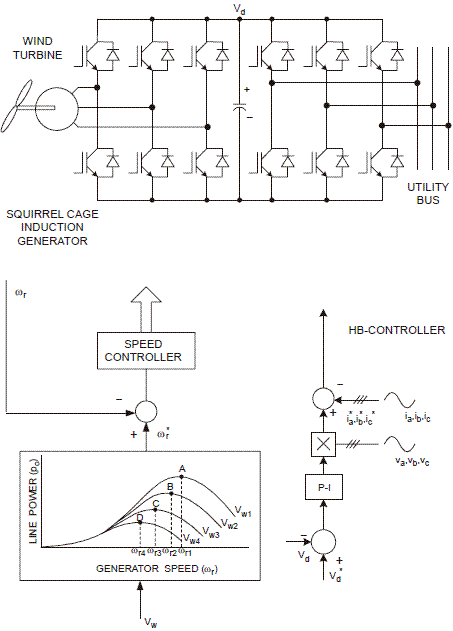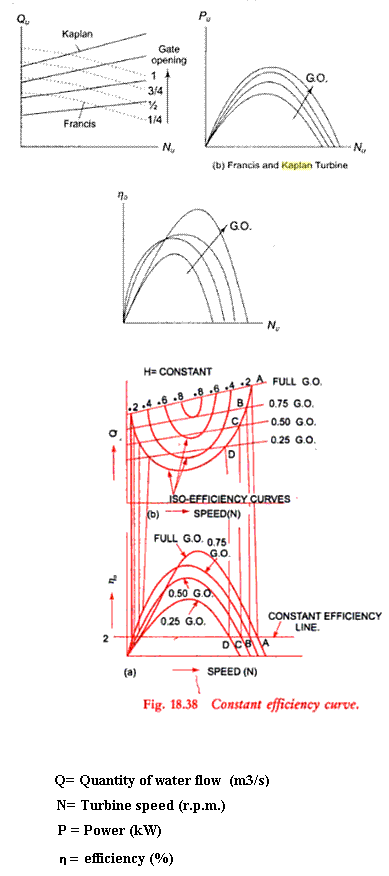- This topic has 8 replies, 1 voice, and was last updated 2 years, 11 months ago by .
-
Topic
-
I own an old watermill in France. I am in the process of upgrading the old Francis turbine. I am thinking of installing a new Single Regulated Kaplan Turbine (variable wicket gate, fixed pitch runner (propeller)). …
I own an old watermill in France. I am in the process of upgrading the old Francis turbine. I am thinking of installing a new Single Regulated Kaplan Turbine (variable wicket gate, fixed pitch runner (propeller)).Looking at the efficiency (hill) graphs for similar turbines it seems that there would be considerable gain in efficiency by operating the turbine at variable speed to accommodate the variable water flow and the variable head. Head is nominally 2.5 m (min 2.0 m, max 3.0m); water flow is up to 10 cubic meters per second.
Grid tied inverters (400 V, 50 Hz) are available to take the variable frequency and variable voltage AC generated by Wind Turbines. I am thinking of using a Permanent magnet Generator (PMG) directly connected to the turbine – no gears or belt drive, less loss, less noise, more stable turbine operation etc.
I have two main questions:
(a) are there links on the web to theoretical and empirical studies of the benefits of using variable speed generators for Single Regulated Kaplan turbines on small hydro projects?
(b) is it possible to obtain inverters that operate with hydro turbines?
To operate the turbine at the optimum speed for the desired water flow it must be necessary to vary the torque at the generator shaft. To vary the torque it must be necessary to vary the electrical load applied by the inverter. How is this done?
Is it possible to program the inverter to optimize the speed by continuously hunting for the optimum speed for maximum electrical output? Is this software algorithm available online?
Thank you in advance for any pointers.
Moulin De Aillevans (Latitude, Longitude) (47.586256, 6.431401)
- You must be logged in to reply to this topic.


 It would appear that optimizing the electrical power generated for any particular gate opening (water flow) would also optimize the efficiency. If this is true it would greatly simplify the controls – no need to know the exact position of the gate opening, the water flow through the turbine or the head. The firmware in the inverter could simply periodically optimize the torque on the generator shaft to optimize electrical power generated. This may only be possible on a hydro turbine because of the relatively slow response time of the turbine and the slowly changing river conditions. A wind turbine must respond much more quickly to changes in wind speed and would not have time to optimize the torque. A predetermined lookup table of turbine performance would be used. Would such an optimizing scheme work for a Kaplan hydro turbine ? Has anyone got experience of optimizing the power from a variable speed hydro turbine ?
It would appear that optimizing the electrical power generated for any particular gate opening (water flow) would also optimize the efficiency. If this is true it would greatly simplify the controls – no need to know the exact position of the gate opening, the water flow through the turbine or the head. The firmware in the inverter could simply periodically optimize the torque on the generator shaft to optimize electrical power generated. This may only be possible on a hydro turbine because of the relatively slow response time of the turbine and the slowly changing river conditions. A wind turbine must respond much more quickly to changes in wind speed and would not have time to optimize the torque. A predetermined lookup table of turbine performance would be used. Would such an optimizing scheme work for a Kaplan hydro turbine ? Has anyone got experience of optimizing the power from a variable speed hydro turbine ?